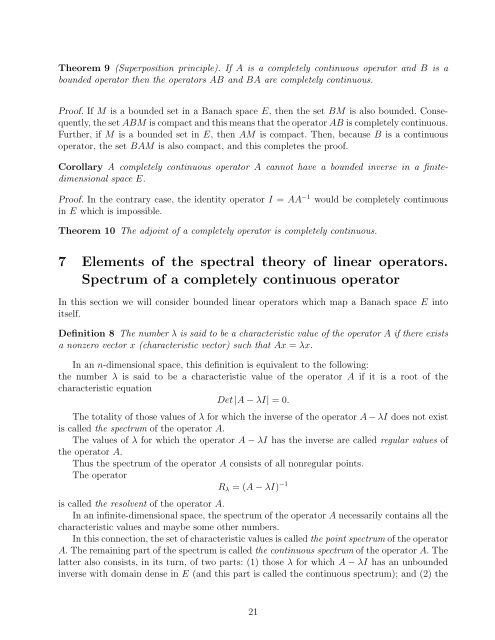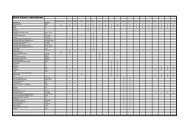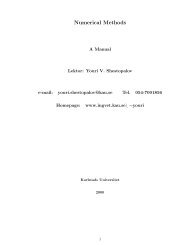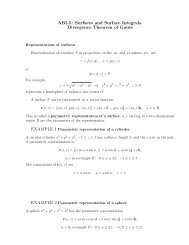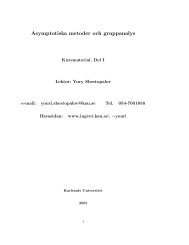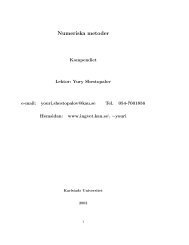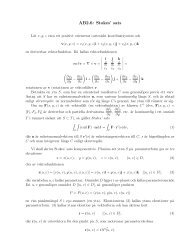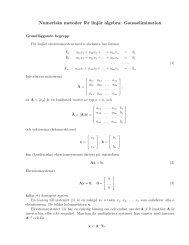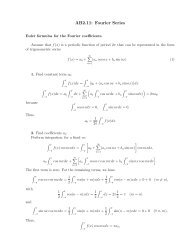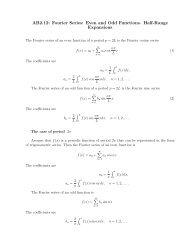Create successful ePaper yourself
Turn your PDF publications into a flip-book with our unique Google optimized e-Paper software.
Theorem 9 (Superposition principle). If A is a completely continuous operator and B is abounded operator then the operators AB and BA are completely continuous.Proof. If M is a bounded set in a Banach space E, then the set BM is also bounded. Consequently,the set ABM is compact and this means that the operator AB is completely continuous.Further, if M is a bounded set in E, then AM is compact. Then, because B is a continuousoperator, the set BAM is also compact, and this completes the proof.Corollary A completely continuous operator A cannot have a bounded inverse in a finitedimensionalspace E.Proof. In the contrary case, the identity operator I = AA −1 would be completely continuousin E which is impossible.Theorem 10 The adjoint of a completely operator is completely continuous.7 Elements of the spectral theory of linear operators.Spectrum of a completely continuous operatorIn this section we will consider bounded linear operators which map a Banach space E intoitself.Definition 8 The number λ is said to be a characteristic value of the operator A if there existsa nonzero vector x (characteristic vector) such that Ax = λx.In an n-dimensional space, this definition is equivalent to the following:the number λ is said to be a characteristic value of the operator A if it is a root of thecharacteristic equationDet |A − λI| = 0.The totality of those values of λ for which the inverse of the operator A − λI does not existis called the spectrum of the operator A.The values of λ for which the operator A − λI has the inverse are called regular values ofthe operator A.Thus the spectrum of the operator A consists of all nonregular points.The operatorR λ = (A − λI) −1is called the resolvent of the operator A.In an infinite-dimensional space, the spectrum of the operator A necessarily contains all thecharacteristic values and maybe some other numbers.In this connection, the set of characteristic values is called the point spectrum of the operatorA. The remaining part of the spectrum is called the continuous spectrum of the operator A. Thelatter also consists, in its turn, of two parts: (1) those λ for which A − λI has an unboundedinverse with domain dense in E (and this part is called the continuous spectrum); and (2) the21


